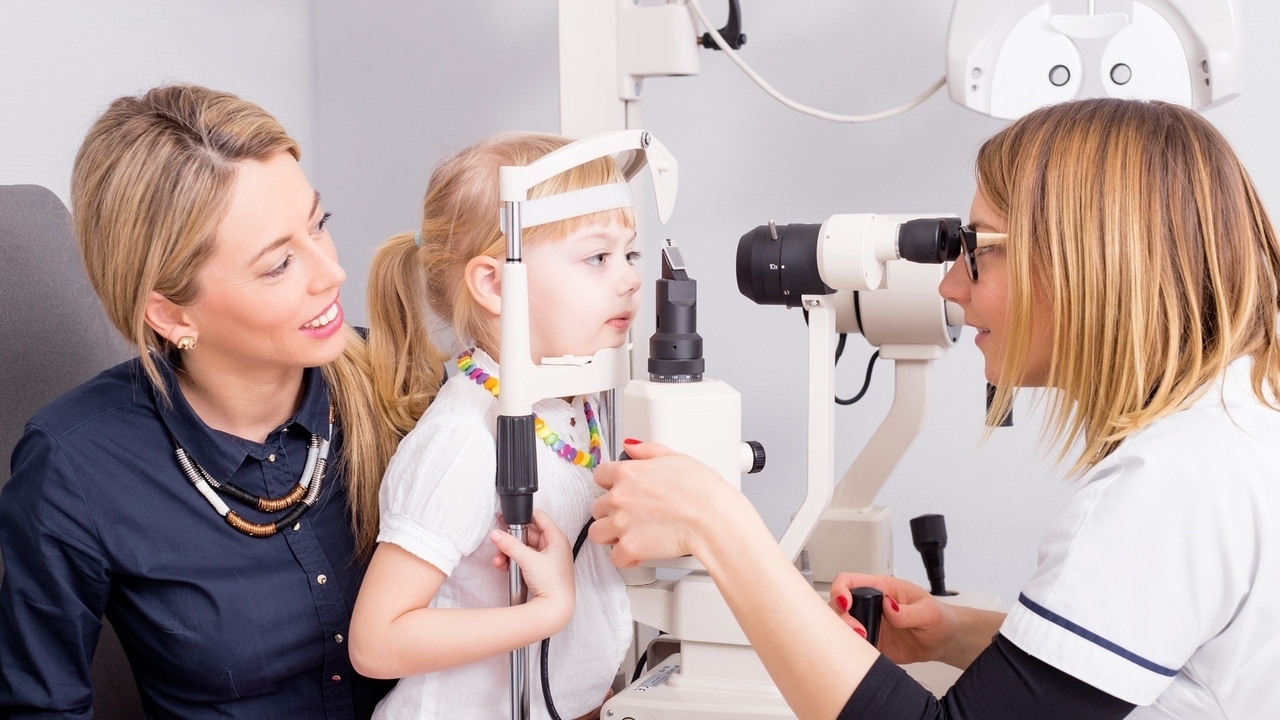 Kaspars Grinvalds/Fotolia
Kaspars Grinvalds/Fotolia
Being able to see well and process visual images effectively are important factors for a child’s success in school. Knowing what to watch for can help parents recognize potential vision problems in their children.
Vision problems in young children tend to present themselves between 18 months and 4 years of age.
The most common problems in this age group are crossed or wandering eyes, and an uneven ability to focus. This means one eye may see well up close, while the other eye focuses better at a distance.
If one eye is more effective than the other at a young age, the brain will concentrate on that eye and ignore images from the weaker eye.
Over time, the loss of vision in the weak eye can become permanent. So it is important to get treatment for crossed or lazy eyes at a young age.
The American Optometric Association recommends that all children have a thorough eye exam by an eye doctor by 3 years of age. This exam will test basic vision, and will also check to be sure the child’s vision is developing normally and that there are no signs of eye disease.
An exam at this age gives children the opportunity to receive treatment or corrective lenses to help them be visually ready to start school.
Once they enter school, good vision becomes an important factor in a child’s ability to learn and keep up with class work.
In addition to just being able to see, a child needs to have a variety of vision skills which include:
• Seeing clearly at a variety of distances.
• Focusing easily at different distances so they can see a smart board at the front of the room and a paper on the desk.
• Tracking across a line of text while reading, or following a moving object while playing games.
• Using both eyes together to judge distances and see depth.
• Coordinating between eyes and hands when drawing, writing or playing sports.
• Perceiving patterns and shapes such as distinguishing between letters.
Many schools offer eye exams which are simple checks of basic vision. It is important to remember that these exams are not intended to replace regular eye exams to detect more complex vision problems or eye diseases.
Children who have eye problems may not complain about poor vision because they don’t know that what they're seeing is not normal.
Parents should be alert to these signs that a child is not able to see clearly:
• Sitting too close to the television or computer screen, or holding a book too close while reading.
• Difficulty tracking across a page while reading, or needing to use a finger to trace along the words while reading.
• Rubbing the eyes often.
• Squinting, tilting the head or closing one eye to see better while reading or watching TV.
• Complaining of headaches or tired eyes.
• Complaining that bright light or the computer screen hurts the eyes.
• Avoiding activities that require good eye-hand coordination or distance vision such as playing catch or riding a bike.
• Avoiding close vision activities such as reading, doing puzzles or coloring.
• Getting lower grades than normal.
If your child shows any of these signs of vision problems, schedule an appointment with an eye doctor.
Vision screenings at school or the pediatrician’s office can help detect a basic vision issue, but are not designed to test all areas of eye function. A child with 20/20 vision can still have a vision problem.
The AOA recommends that all school-age children should receive a comprehensive eye exam from an optometrist or ophthalmologist at least every two years to check for eye disease as well as screening for vision problems.
Children with vision issues should see the eye doctor more often.
If you have questions about your child’s vision, talk to your health care provider.
Reviewed March 18, 2016
by Michele Blacksberg RN
Edited by Jody Smith
Signs of Vision Problems in Young Kids. Web MD. Retrieved March 16, 2016.
http://www.webmd.com/eye-health/features/child-eye-and-vision-problems?page=2
Preschool Vision: 2 to 5 Years of Age. American Optometric Association. Retrieved March 16, 2016.
http://www.aoa.org/patients-and-public/good-vision-throughout-life/childrens-vision/preschool-vision-2-to-5-years-of-age?sso=y
School-aged Vision: 6 to 18 Years of Age. American Optometric Association. Retrieved March 16, 2016.
http://www.aoa.org/patients-and-public/good-vision-throughout-life/childrens-vision/school-aged-vision-6-to-18-years-of-age?sso=y#3
Vision Problems of Schoolchildren. All About Vision. Retrieved March 16, 2016.
http://www.allaboutvision.com/parents/schoolage.htm




Add a Comment1 Comments
Its like you learn my mind! You seem to grasp a lot about this, like you wrote the ebook in it or something.
March 22, 2016 - 8:09amI believe that you just can do with some p.c. to force the
message house a bit, however other than that, that is fantastic blog.
An excellent read. I will certainly be back.
This Comment